The following are current GB alert species. By recording any sightings of these species as quickly as possibly you could be helping to prevent the establishment of a new invasive non-native species.
Any non-native species sightings can be recorded online through iRecord. Learn more about recording non-native species.
Download a poster with GB alert species.
Jump to:
Vertebrates
- American bullfrog (Lithobates catesbeianus)
- Monk parakeet (Myiopsitta monachus)
- Raccoon (Procyon lotor)
- Raccoon dog (Nyctereutes procyonoides)
- Ruddy duck (Oxyura jamaicensis)
- Sacred ibis (Threskiornis aethiopicus)
- Siberian chipmunk (Tamias sibiricus)
- Topmouth gudgeon (Pseudorasbora parva)
- Black Bullhead (Ameiurus melas)
Plants
- Water primrose (Ludwigia grandiflora)
- Carolina fanwort (Cabomba caroliniana)
- Chilean needle-grass (Nassella neesiana)
- Purple pitcher plant (Sarracenia purpurea)
- Sea myrtle (Baccharis halimifolia)
- Various-leaved watermilfoil (Myriophyllum heterophyllum)
Invertebrates
- American lobster (Homarus americanus)
- Japanese sting winkle (Ocinebrellus inornatus)
- Marbled crayfish (Procambarus fallax f. virginalis)
- Asian hornet (Vespa velutina)
American bullfrog
Lithobates catesbeianus
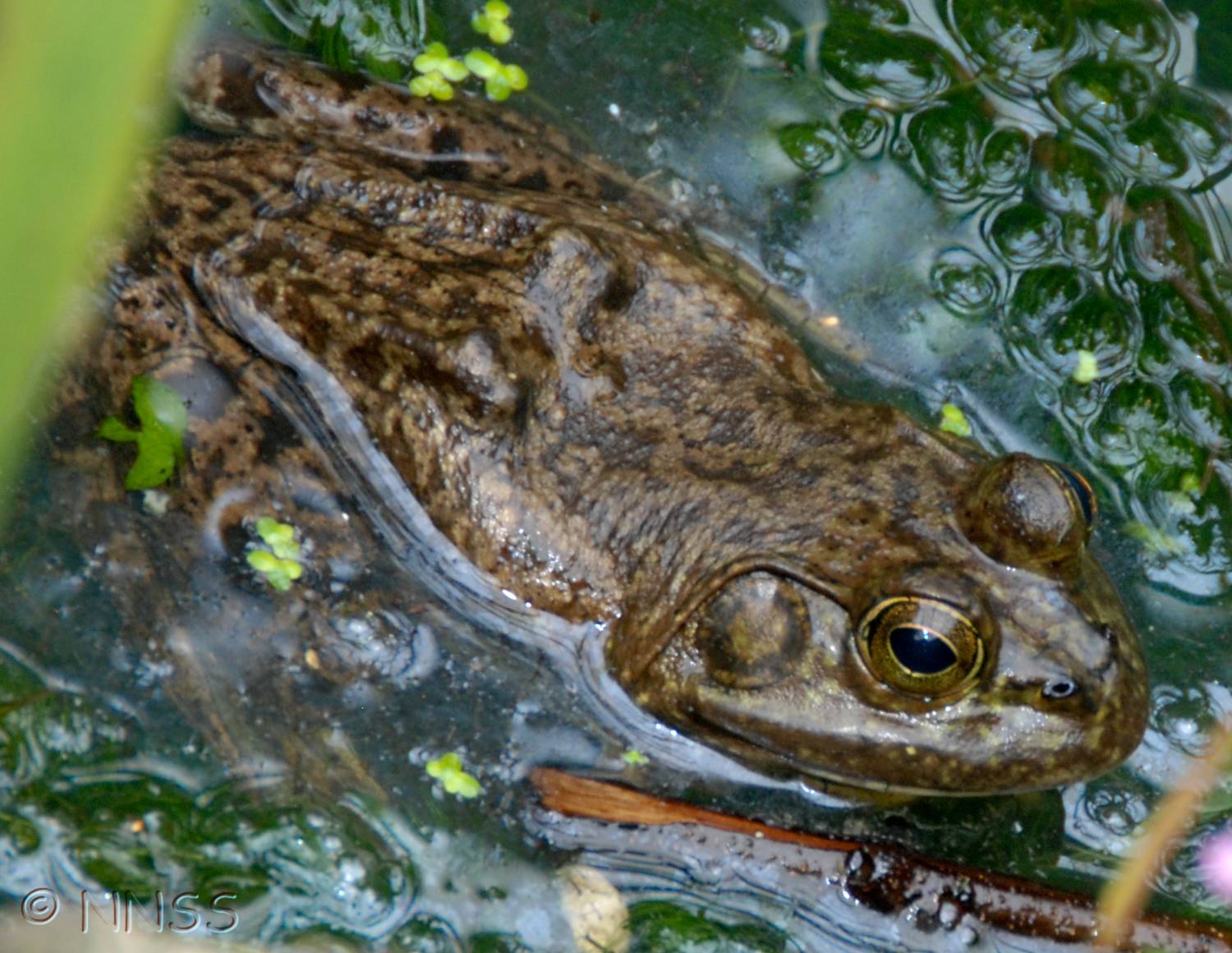
Native to: Eastern North America
Impact: introduced to around 25 countries worldwide where it feeds day and night on a wide range of prey, including other amphibians, fish, small mammals and birds. May carry the chitrid fungus Batrachochytrium dendrobatidis, and can spread the disease chytridiomycosis to native amphibians.
GB status: not yet widely established but there have been a few records of American bullfrog populations in GB since 1996.
Record suspected sightings (external link).
Image: GB NNSS
Further information on American bullfrog:
Monk parakeet
Myiopsitta monachus
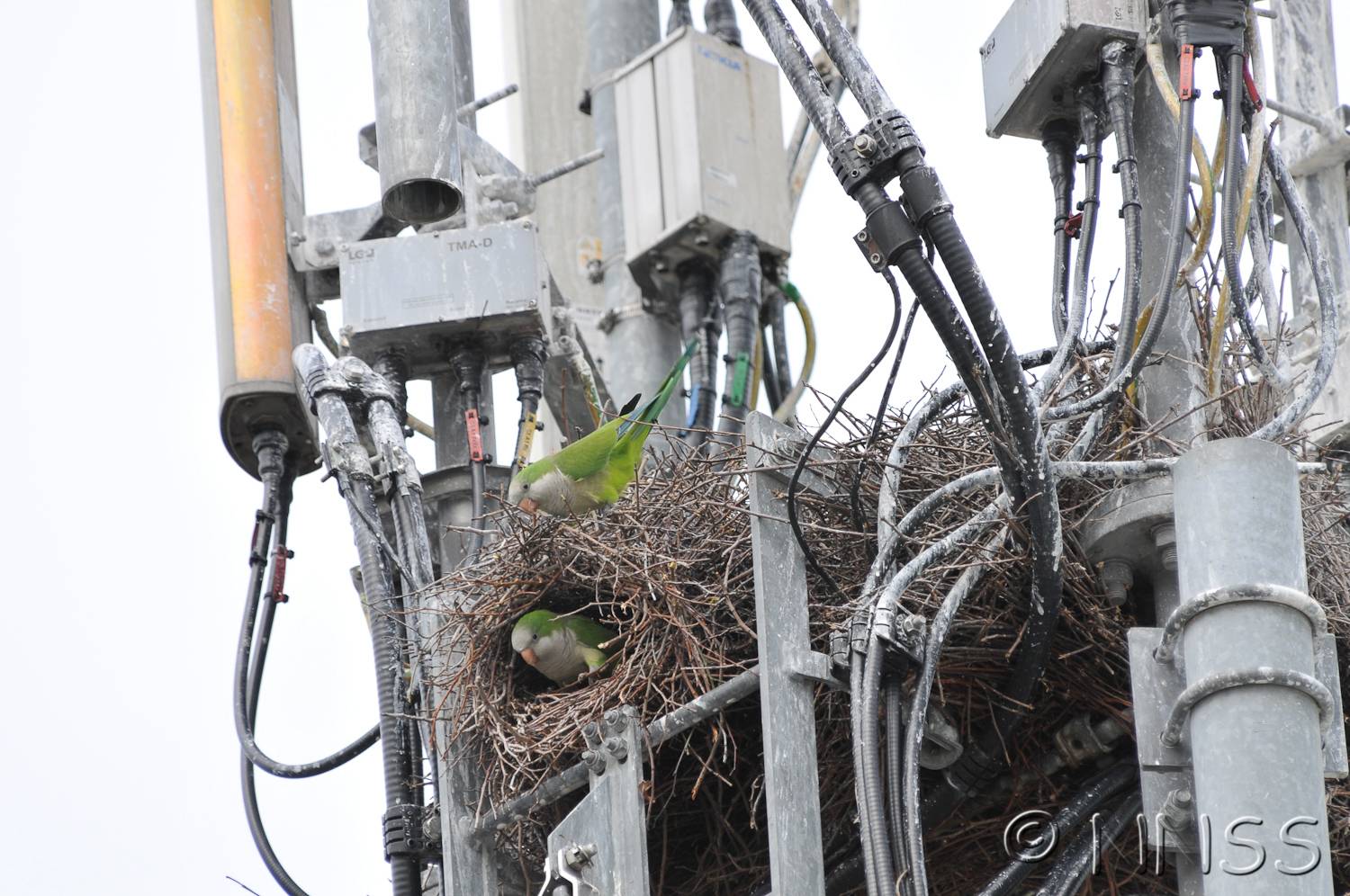
Native to: South America
Impact: in areas where it has become invasive it has been observed killing native birds, and competing for food. The large nests it produces are unsightly and the noise monk parakeets produce can be a serious nuisance. Monk parakeet can carry diseases that can be passed to wild birds and poultry, and potentially humans.
GB Status: has formed a few small wild-living colonies in England but is not currently considered self-sustaining in GB.
Image: GB NNSS
Record suspected sightings (external link).
Further information on Monk parakeet:
Raccoon
Procyon lotor
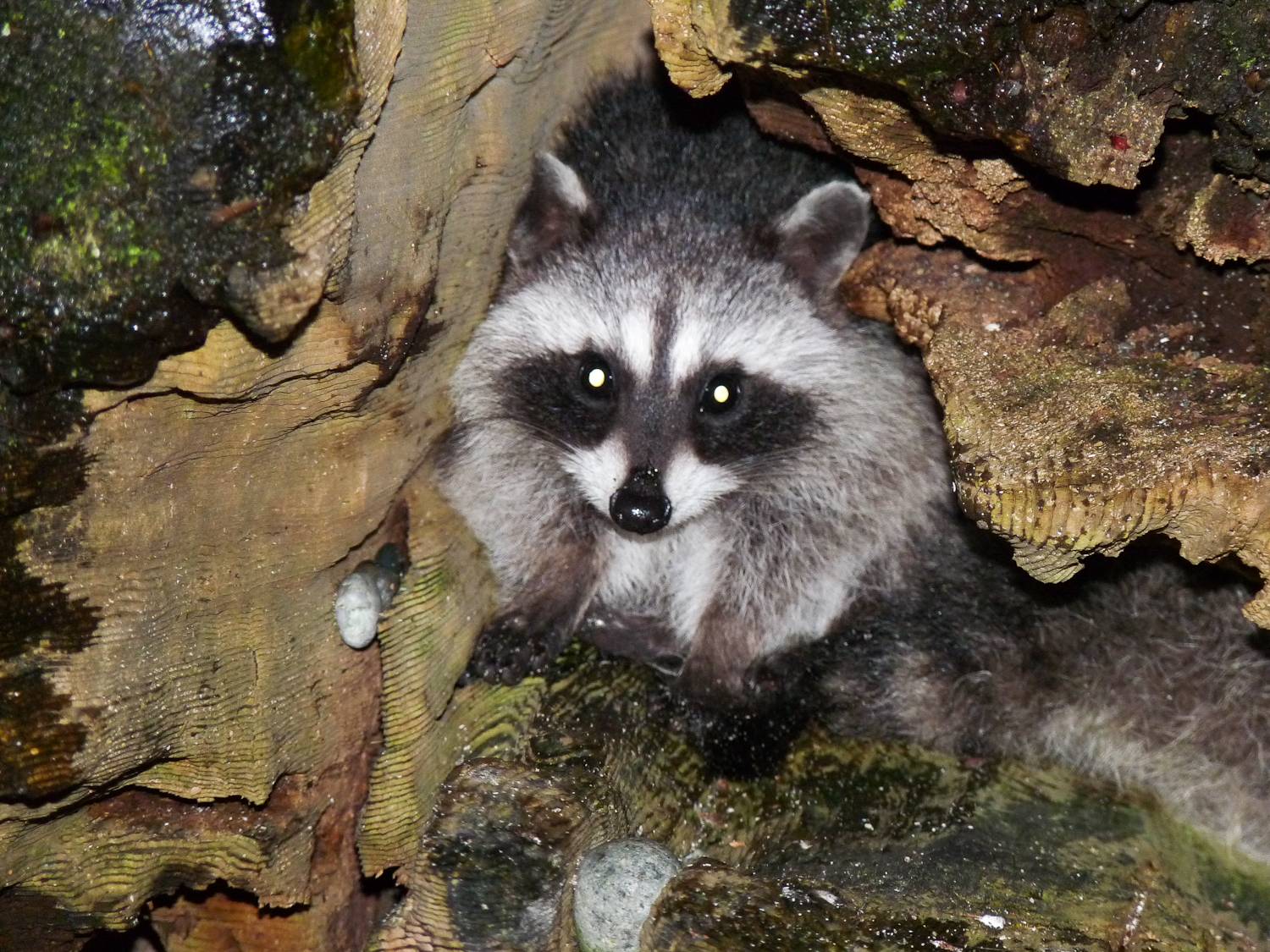
Native to: North and central America
Impact: raccoon is a major predator of birds and rodents and can kill domesticated animals. It can transmit diseases and parasites to domestic and wildlife species and humans, damage fields, gardens, and crops, and cause nuisance problems around houses.
GB Status: not established but occasionally escapes from collections. There is a risk that this species may become established and invasive, if releases continue.
Image: Sugoto Roy
Record suspected sightings (external link).
Further information on Raccoon:
Raccoon dog
Nyctereutes procyonoides
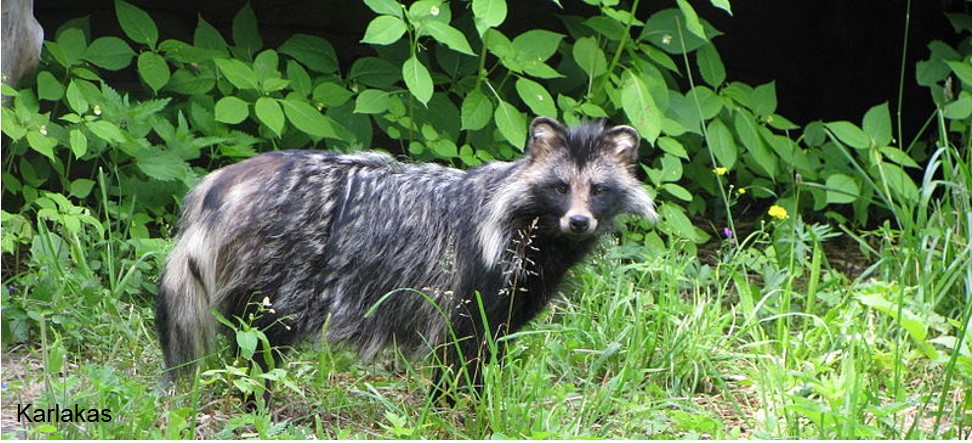
Native to: Russian far east, China, Mongolia, North Korea, South Korea and Vietnam.
Impact: may affect native wildlife and game through predation and competition and is a carrier of several zoonotic diseases including rabies. Raccoon dog is one of the top 100 invasive species in Europe.
GB status: not established, but sightings of individuals have been reported.
Record suspected sightings (external link).
Image: Karlakas, CC BY-SA 3.0, via Wikimedia Commons
Further information on Raccoon dog :
Ruddy duck
Oxyura jamaicensis

Native to: North America.
Impact: Ruddy ducks from introduced populations in Europe hybridise with the native European white-headed duck in Spain, with the potential to case the global extinction of this white-headed duck as a result.
GB status: An EU project to eradicate ruddy duck to protect white-headed duck is ongoing, read more about the project.
Image: GB NNSS
Record suspected sightings (external link).
Further information on Ruddy duck :
Sacred ibis
Threskiornis aethiopicus
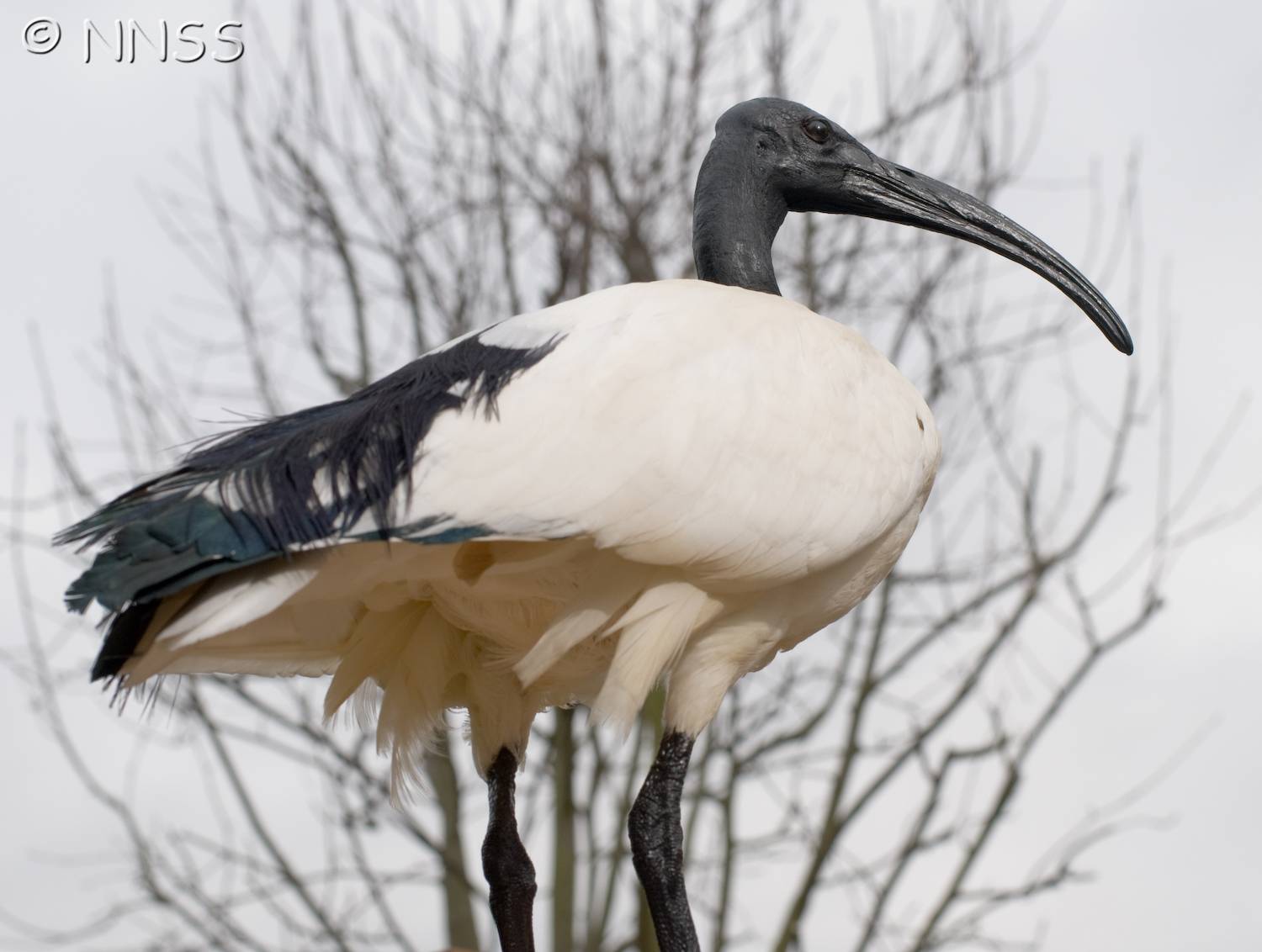
Native to: parts of Africa.
Impacts: can have serious impacts on other bird species due to predation of eggs and chicks. Sacred ibis could cause nuisance or environmental health concerns by scavenging from rubbish bins in areas of human habitation. It is possible that they may also carry disease which could be harmful to poultry, native wildlife and humans.
GB Status: occasionally recorded in GB.
Record suspected sightings (external link).
Further information on Sacred ibis :
Siberian chipmunk
Tamias sibiricus

Native to: the Eurasian taiga zone, from Finland and westernmost Russia (Karelia) eastwards to eastern Siberia, Japan and eastern China.
Impact: chipmunks are sometimes reported as important predators of low-nesting birds outside GB, and may compete with native woodland mammals. They consume many forest nuts and can damage grain crops and destroy garden plants and the bulbs of rare wildflowers.
GB status: escapes and releases are known to have been occurring since at least 1999, when one was found in Yorkshire. Although most have been quickly recaptured or killed, some animals have remained at large for several months.
Record suspected sightings (external link).
Image: GB NNSS
Further information on Siberian chipmunk :
Topmouth gudgeon
Pseudorasbora parva

Native to: East Asia.
Impact: can compete with native and farmed fish for food, space and spawning habitat. May prey on fish fry/eggs and invertebrates, deplete native fish populations and reduce commercial fish productivity. The depletion of zooplankton can increase phytoplankton abundance and hence eutrophication. This species can also be a vector of disease e.g. Spherotecum destruens.
GB status: has been recorded in a few sites in GB but is under eradication.
Record suspected sightings (external link).
Image: Matt Brazier, Environment Agency
Further information on Topmouth gudgeon :
Black Bullhead
Ameiurus melas
Native to: Canada, USA and Mexico
Impact: may be a vector of several pathogens, including herpesvirus, bacterial diseases and parasites. Could also be a nuisance species for anglers, and impact on native predators by reducing the amount of available prey and increasing turbidity of the water, potentially making it harder for visual predators to hunt.
GB status: only known GB population has been eradicated
Record suspected sightings (external link).
Image: Gareth Davies, Environment Agency
Further information on Black Bullhead:
Water primrose
Ludwigia grandiflora
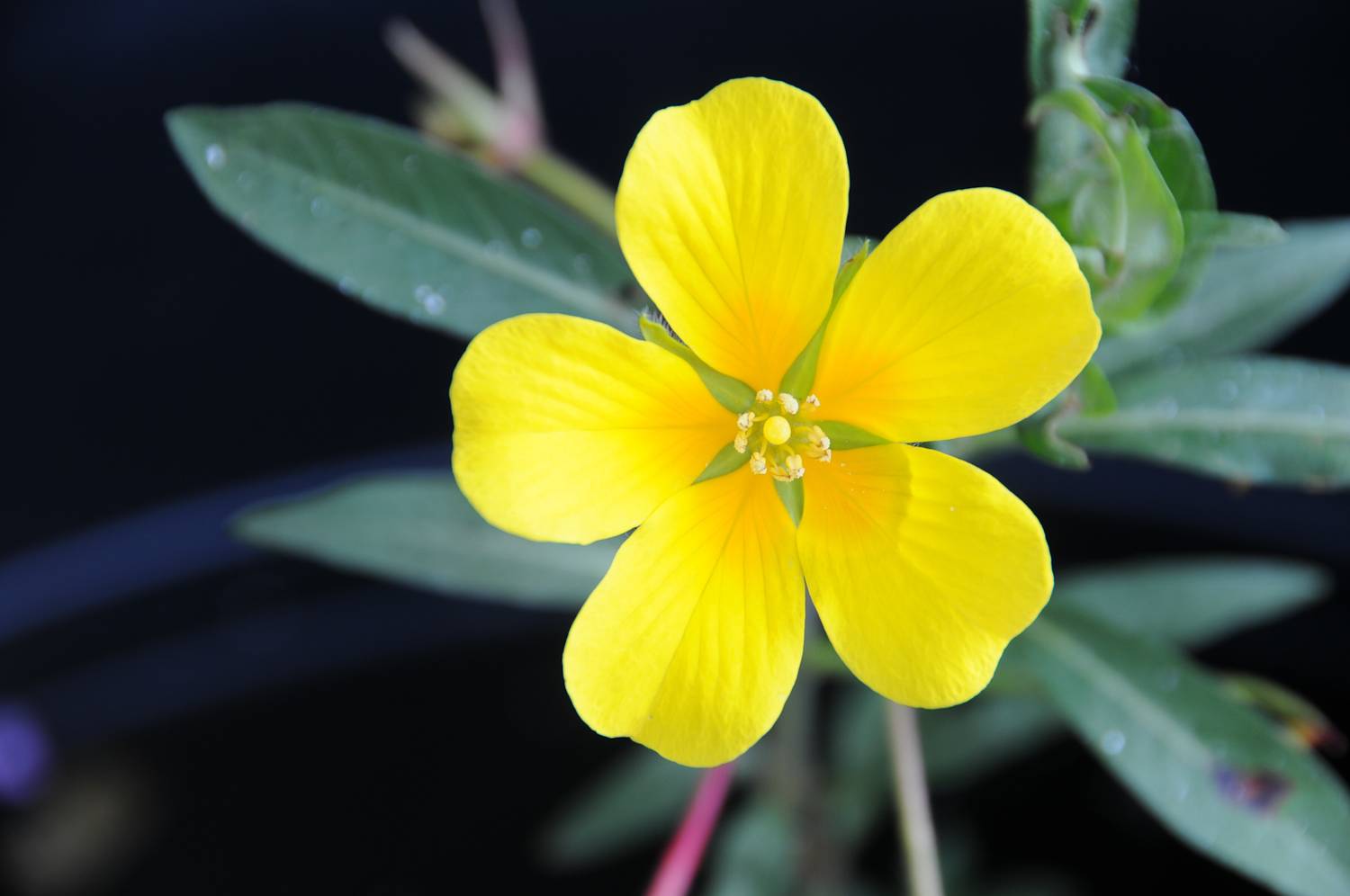
Native to: South America
Impact: has become a serious pest in other countries, including France, where it smothers water bodies reducing the numbers of native species and potentially increasing the risk of flooding.
GB Status: recorded in a few sites, under eradication.
Record suspected sightings (external link).
Image: Trevor Renals, Environment Agency
Further information on Water primrose:
Carolina fanwort
Cabomba caroliniana
.jpg)
Native to: South America and southern parts of North America.
Impact: potentially large impacts on native aquatic communities and may also affect aquaculture, damage equipment, and impede recreational activities. It has caused problems in the Netherlands.
GB Status: a few populations have established in south-east England, but these are not yet invasive due to current climatic conditions.
Record suspected sightings (external link).
Image: RPS Group PLC
Further information on Carolina fanwort :
Chilean needle-grass
Nassella neesiana
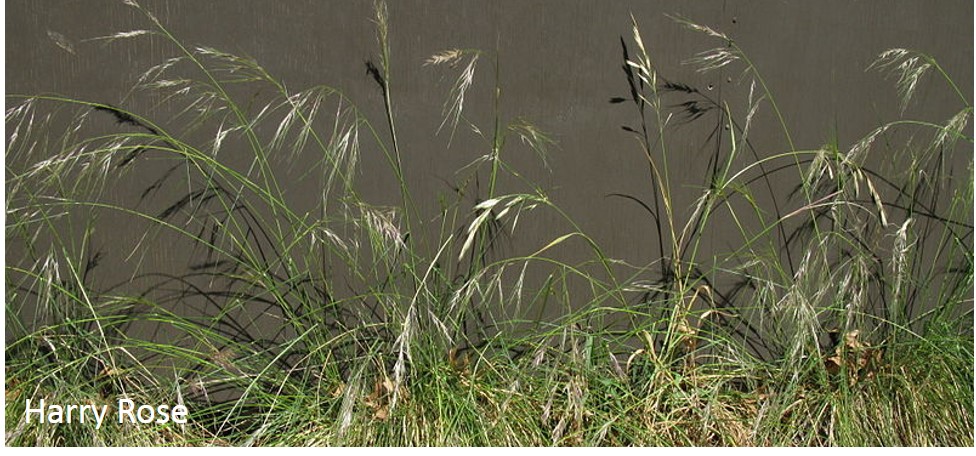
Native to: South America
Impact: in areas where it is invasive this species outcompetes replace native plants, reducing the biodiversity of native grasslands, and its seeds can harm livestock if eaten.
GB status: view the NBN distribution map (external link) for this species.
Record suspected sightings (external link).
Image: Harry Rose from South West Rocks, Australia, CC BY 2.0 via Wikimedia Commons
Further information on Chilean needle-grass :
Purple pitcher plant
Sarracenia purpurea
Native to: North America.
Impacts: This carnivorous plant prefers high quality bog habitat and is usually found in SSSIs, SACs and NNRs, where it outcompetes native bog vegetation, may impact on invertebrate communities, and disrupts trophic interactions and nutrient cycling.
GB status: localised within GB, with 20 sites in England and two in Scotland.
Record suspected sightings (external link)
Image: Catherine Chatters
Further information on Purple pitcher plant :
Sea myrtle
Baccharis halimifolia
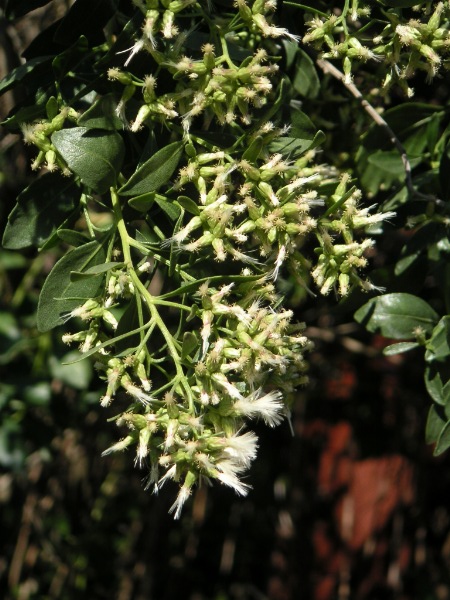
Native to: North America
Impact: invasive in coastal areas where it outcompetes native plants and alters the ecosystem. Its leaves are toxic to livestock and its pollen and pappus can cause irritation in humans. Difficult and expensive to control or eradicate.
GB status: has been recorded at a small number of sites in GB.
Record suspected sightings (external link).
Image: Jean-Jacques MILAN, CC BY-SA 3.0, via Wikimedia Commons
Further information on Sea myrtle:
Various-leaved watermilfoil
Myriophyllum heterophyllum
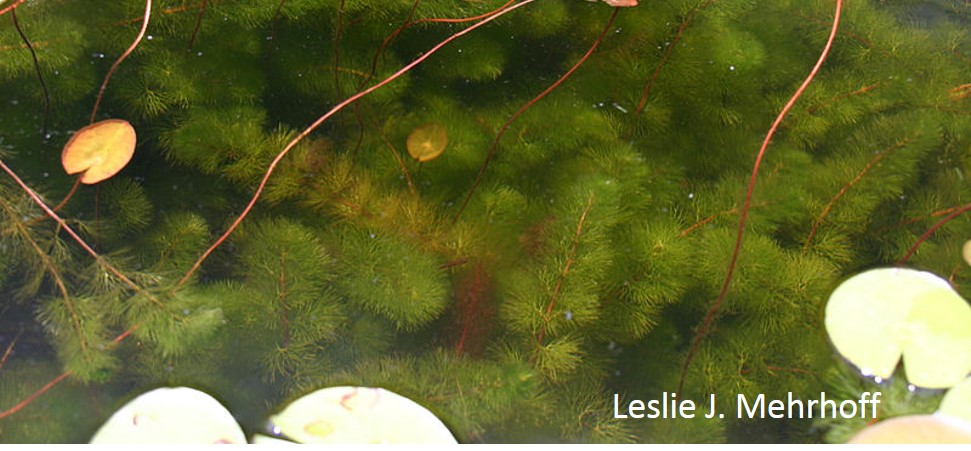
Native to: North America and Mexico
Impact: can quickly form dense mats in the water which crowd out native species, prevent water flow, reduce sunlight and oxygen availability, and interfere with navigation and recreational use.
GB status: recorded in a few sites in GB but not established.
Record suspected sightings (external link).
Image: Leslie J. Mehrhoff, University of Connecticut, Bugwood.org, CC BY 3.0, via Wikimedia Commons
Further information on Various-leaved watermilfoil :
American lobster
Homarus americanus
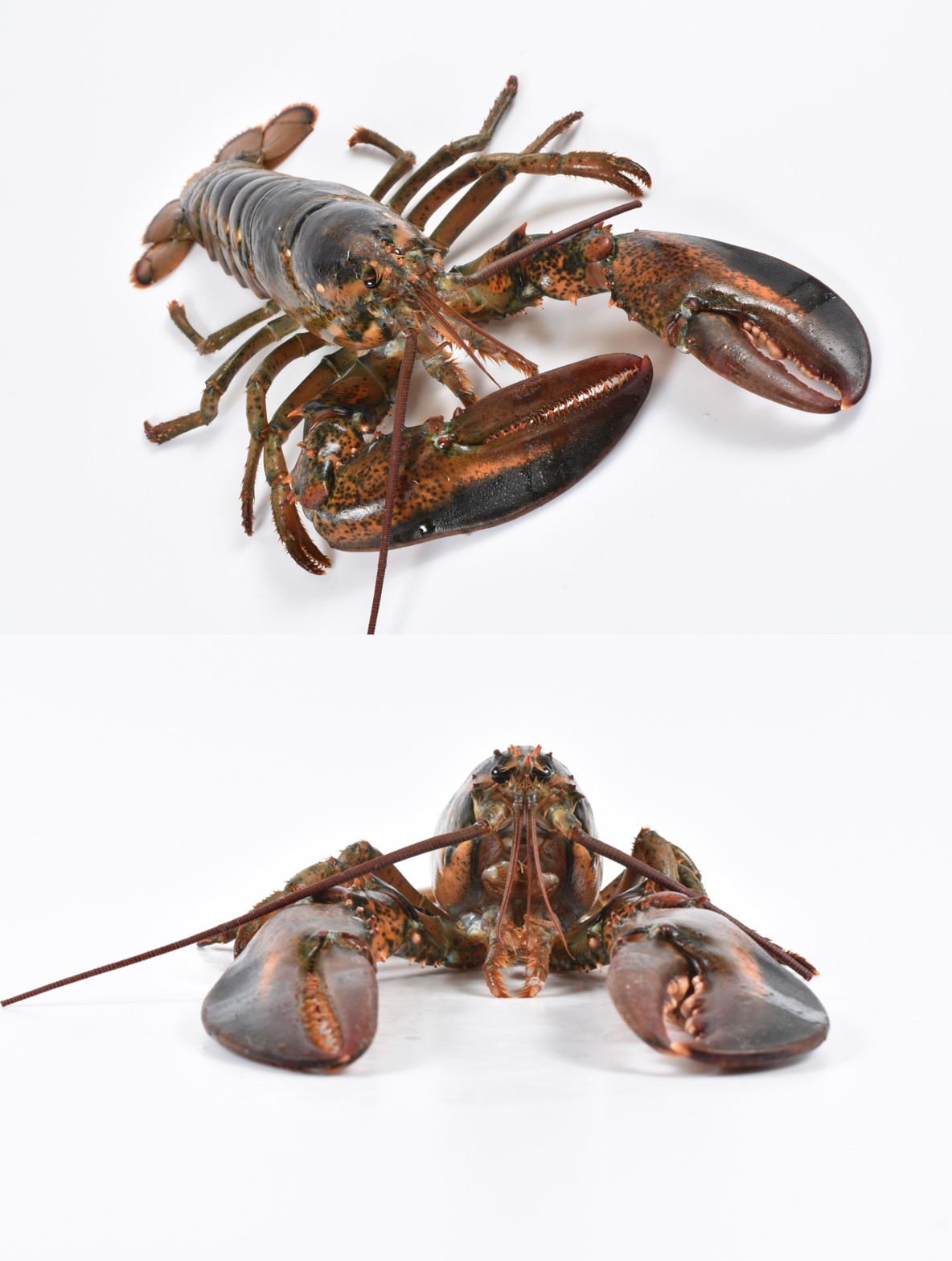
Native to: north west Atlantic
Impact: could impact on UK lobster stocks and the marine environment, as American lobster could carry diseases, or compete for resources and interbreed with the native European lobster. May also compete with edible crab. Potential economic impacts could be significant due to loss of native lobster (and impact on edible crab).
GB Status: occasionally found in UK waters.
Recording suspected sightings: any American lobsters or hybrid lobsters (offspring of an American lobster & a European lobster) found should be retained and reported as soon as possible to:
England
- Marine Management Organisation (MMO) (external link) or
- Inland Fisheries and Conservation Authority (IFCA) (external link)
Scotland
Wales
Northern Ireland
- submit reports via CEDaR onling recording (external link) or
- iRecord (external link)
Image: Cefas
Further information on American lobster :
Japanese sting winkle
Ocinebrellus inornatus
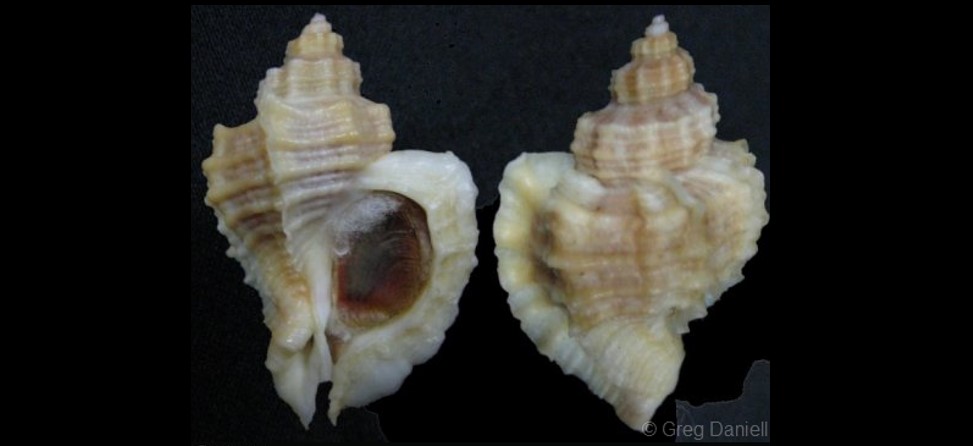
Native to: Asia.
Impacts: preys on a range of species including commercially and environmentally important species such as oysters. Considered a serious pest species in oyster beds in the western USA and parts of Europe where it is established.
GB status: not yet present.
Record suspected sightings (external link).
Image: Muséum national d'histoire naturelle, CC BY 4.0, via Wikimedia Commons
View a Cefas advice note for this species.
Further information on Japanese sting winkle :
Marbled crayfish
Procambarus fallax f. virginalis

Native to: Southeastern USA
Impacts: marbled crayfish is a serious threat to aquatic biodiversity. A single specimen can create a new population. This species is known to consume a broad range of plants and invertebrates, posing a risk to native ecosystems if released to natural waters.
GB Status: not yet recorded in GB.
Record suspected sightings (external link).
Image: Chucholl C., CC BY-SA 3.0, via Wikimedia Commons
Further information on Marbled crayfish :
Asian hornet
Vespa velutina

Native to: Asia.
Impact: a highly effective predator of insects, including honey bees and other beneficial species, which can cause significant losses to bee colonies, and potentially other native species.
GB status: Asian hornet arrived in France in 2004 where it spread rapidly. A number of sightings have been recorded in the UK since 2016, find the latest information on Defra's Asian hornet news page (external link).
Recording: Please report any suspected sightings of this species immediately with a photo, ideally via the links below:
You can also email us to report an Asian hornet sighting. Please include a photograph and location details. Do not under any circumstances disturb or provoke an active hornets’ nest.
Vigilance is particularly required in southern parts of England and Wales and around major ports. Asian hornet is active mainly between April and November (peak August/September) and is inactive over the winter.
Image: Jean Haxaire
Useful resources:
- Alert poster English | Welsh
- ID sheet: English | Welsh |
- Nest ID sheet: English | English (HTML) | Welsh
- Request free hard copies of the above materials
- Images files:
- Awareness and ID booklet
- The BeeBase website has guidance for beekeepers.
Further information on Asian hornet:
